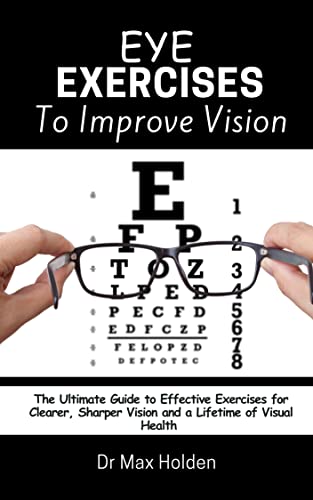Vision is an indispensable faculty that significantly influences daily life, occupational efficiency, and overall well-being. Within the context of an increasingly visually demanding environment, characterized by prolonged screen usage and environmental stressors, it becomes paramount to adopt comprehensive eye health routines. This discourse elucidates various strategies that can bolster visual acuity and promote ocular health, encompassing dietary considerations, exercise regimens, and preventive practices.
Maintaining optimal eye function necessitates a multifaceted approach. This involves not only direct care techniques but also lifestyle modifications that collectively enhance visual performance and mitigate degradation. Therefore, approaching eye health through a holistic lens is essential.
Numerous studies underscore the importance of nutrition in maintaining ocular health. Micronutrients play a pivotal role in preventing age-related ocular diseases. Antioxidants, such as vitamins A, C, and E, as well as minerals like zinc and omega-3 fatty acids, are instrumental in preserving the integrity of retinal tissues. These nutrients combat oxidative stress—a significant factor in conditions like macular degeneration and cataracts. Consequently, integrating a diet rich in leafy greens, colorful fruits, nuts, and fatty fish can provide the necessary substrates for cellular repair and regeneration.
Moreover, the concept of the “20-20-20 rule” merits attention as a preventive strategy for digital eye strain, a burgeoning concern in today’s society. Eye fatigue can ensue from extended periods of staring at electronic devices. To alleviate the potential repercussions, the 20-20-20 rule advocates looking at an object 20 feet away for at least 20 seconds after every 20 minutes of screen time. This simple yet effective strategy encourages a periodic reset of the ocular muscles, diminishing fatigue and discomfort.
Additionally, eye exercises have emerged as a viable method to enhance visual acuity and alleviate eye strain. Simple practices, such as the palming technique, offer a quick respite for fatigued eyes. By gently rubbing the palms together to generate warmth and then placing them over the closed eyelids for several seconds, individuals can foster relaxation. This technique alleviates tension within the ocular muscles, creating a soothing effect that can rejuvenate the visual system.
Another beneficial exercise is the practice of focusing on near and far objects. This bifocal regimen involves selecting a distant object to focus on for a few seconds, followed by transitioning the gaze to a nearby object. Such exercises can effectively strengthen the ciliary muscles, crucial for lens accommodation. Enhanced accommodation not only sharpens focus across varying distances but also supports overall visual performance.
Incorporating blink exercises also proves beneficial. Frequent blinking is often overlooked in environments dominated by screen use, leading to dry, uncomfortable eyes. Frequent, intentional blinking helps to hydrate the eyes and spread tears evenly across the surface. Notably, the practice of consciously blinking several times every minute can counterbalance the effects of reduced blink rates typically experienced during extensive screen exposure.
Furthermore, cultivating a well-lit workspace contributes significantly to eye health. Ensuring adequate lighting minimizes glare and reduces visual strain. Positioning screens at a proper distance—approximately an arm’s length away—and at a height that aligns with the eyes can promote ergonomic integrity. The use of anti-glare screens and blue light filters is also recommended to mitigate the harmful effects of prolonged exposure to artificial lighting.
Protective eyewear is another critical element of an effective eye health routine, particularly in environments rife with hazardous materials or intense light exposure. Safety goggles are indispensable in occupational settings, while UV-blocking sunglasses are essential when outdoors. Ultraviolet radiation poses a risk for long-term retinal damage; hence, investing in quality eyewear is an astute preventative measure.
Regular ocular check-ups serve as a cornerstone of a robust eye health routine. Comprehensive eye examinations, recommended annually, facilitate the early detection of potential pathologies such as glaucoma, diabetic retinopathy, and retinal degenerations. These conditions can progress asymptomatically, underscoring the importance of preventive evaluations. Moreover, discerning a baseline level of vision allows for timely interventions and the initiation of corrective strategies.
Furthermore, the utility of mindfulness practices cannot be underestimated. Engaging in meditation has been shown to reduce stress, which is implicated in various ocular conditions. Techniques that cultivate awareness of eye strain and facilitate relaxation can contribute positively to visual wellness. Incorporating mindful practices into one’s daily routine may involve allocating time for deep breathing exercises or conducting gentle eye rotations to enhance blood circulation in the eye area.
The nexus between hydration and ocular health should also be highlighted. Dehydration can lead to dry eye syndrome, characterized by inadequate tear production. Consuming an adequate quantity of water daily is paramount for maintaining tear film stability. Additionally, utilizing humidifiers in dry environments can assist in maintaining ambient moisture levels, thereby supporting ocular hydration.
Lastly, the adoption of a balanced lifestyle that prioritizes physical health profoundly impacts eye health. Regular physical activity enhances overall circulation, thus promoting nutrient delivery to eye tissues. Moreover, engaging in aerobic exercises has been correlated with a decreased risk of developing age-related macular degeneration. Therefore, integrating exercise routines that include cardiovascular activities can indirectly contribute to sharper vision.
In conclusion, nurturing vision through a bespoke eye health routine necessitates a synthesis of dietary vigilance, physical care, preventive screenings, and environmental modifications. With the prevalence of visually demanding activities in contemporary society, the implementation of comprehensive strategies is imperative to preserve and enhance visual function. By interweaving these multifaceted approaches, individuals can cultivate a resilient framework conducive to sharper vision and sustained ocular health. As research continues to evolve in the field of ophthalmology, emphasizing prevention through informed practices will remain a fundamental element in the pursuit of optimal eye health.
